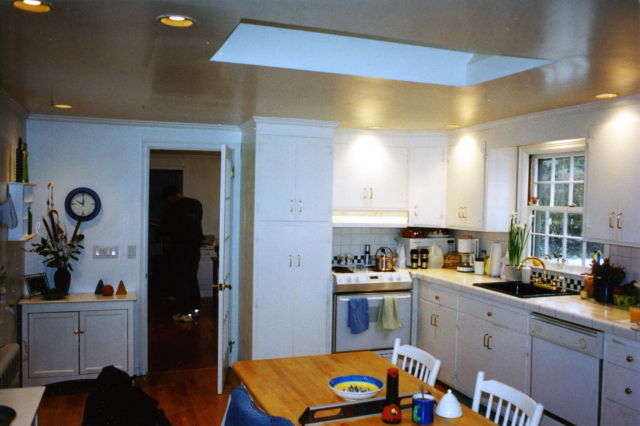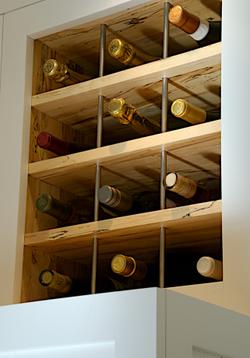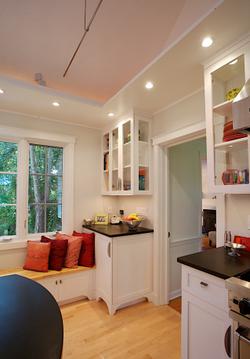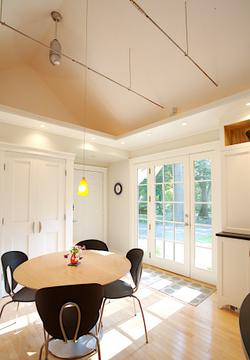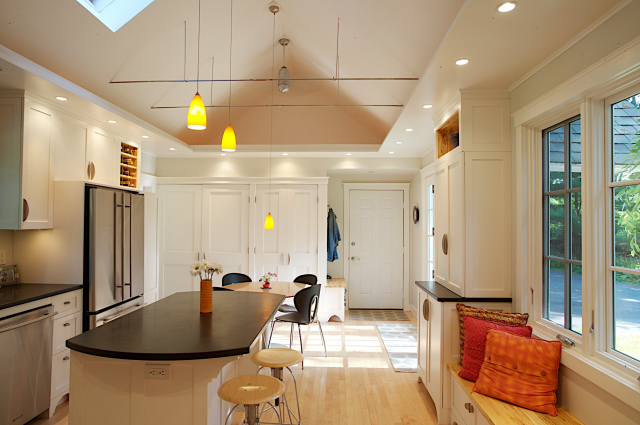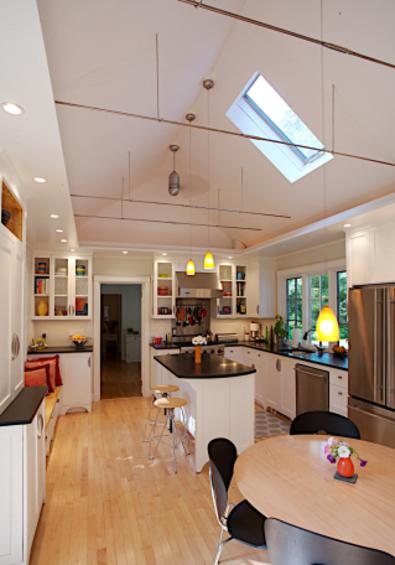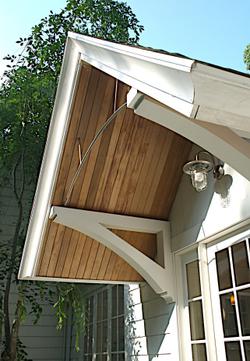PROJECTS
INTERIORS
The owners of this classic suburban home (basically a Cape and a garage connected by a breezeway kitchen) knew that the space they used most in the house, the place they cooked and ate, the ever so tight breezeway that not only provided the functional front door to the house but also its mudroom, laundry, larder, and a modicum of informal living space, was rapidly falling into terminal disability. Fully 25 years old, its appliances and cabinetry were sporadically failing and the punctuated skylight set to its low 7’-8” ceiling only highlighted the decay and degradation of the heavily used interior.
With an extremely tight budget, the owners contacted an architect who knew that his fee would only take away from the owners’ ability to fully address all the problems they had. Realizing they needed his input, the owners asked the architect to give his thoughts as to how they could not only have an artful change in the most important space in their house, but also afford the level and quality and craft that they would absolutely appreciate. The answer was simple, if the owners walked the talk of budgetary restraint, if they actually picked up the slack between what a builder, a woodworker, and an architect could provide, they could save at least 15% to 30% of the total project budget.
The owners dove in, with gusto. Realizing that a new front entry roof and stoop needed a full set of construction drawings, that’s what the architect produced. Realizing that the final structural resolution to a complete gutting and vaulting of the breezeway ceiling needed structural engineering, that service was applied only after all the surfaces were gutted for the building, and those engineering drawings were directly applied without processing through the architect, saving a fair amount of money in fees. Realizing that they needed the architect’s life-long experience designing space, lighting, and cabinetry, they used his ability to draw small soft line sketches and then took those sketches and literally taped the design out full size onto walls, floors, and ceiling to create a three-dimensional visualization of windows, cabinets, countertops, etc. Those reality checks in hand, they went about doing their own set of soft line drawings directly dealing with the cabinetmaker, who in turn did enough shop drawings that the architect could review them. As the project progressed, on-site visits by the architect (who was local, thus saving time and money) allowed for total control and a beautiful finished product at a wholesale price - the architect’s fee was less than 5% of the total construction budget.
The work the owners did was daunting. Interconnecting woodworker to contractor, and appliances to both, coordinating architect site visits, detail forming between all parties, as well as the odd emergency call to verify whether a structural condition would or would not work, meant that dozens, if not hundreds of hours were spent in an effort to create a design that was truly theirs, while at the same time taking full advantage of the tender loving care that dedicated professionals could provide.
The built project, involving stone countertops, lacquered custom cabinetry, spaulted maple and stainless steel appointments, carefully insinuated lighting (both down and up shine) and small grace notes of functional accommodation (integrated window seat, “mudroom” niche, washer/dryer) as well as thoughtful furnishing and finishing, was a labor of love that bore enormous fruit for all concerned.
Before
After
MADISON


